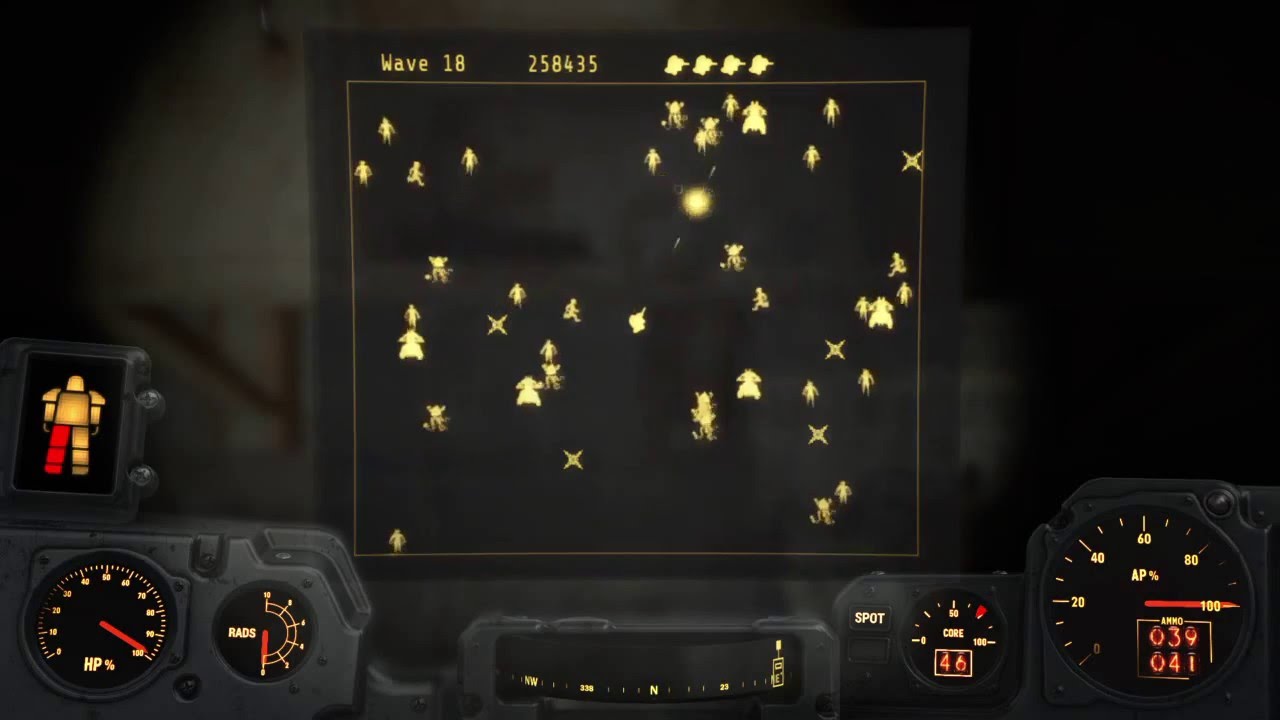C++ Game Engine
Development Time: 90 Days
IDE: Visual Studio 2013
Middleware: Qt, GoogleTest
Tutorials/Sources: Jaime King
Overall Goal: Advanced Game Programing Concepts and efficient math programming techniques
Description: Started out as educational engine development, then wanted to create my favorite Fallout 4 mini game.

Goal Implementation
Screenshot of Fallout 4: DLC Automotron Mini Game
Overview of Implementation:
Entity-Component Design Pattern
Conditional Compiling
Object Oriented Paradigm
Custom Written Optimized 3D Math Libraries (Matrices & Vectors)
All Player Movements is in Vector Math
Handling memory on the stack -> the GPU
Test Driven Development (via Google Test)
OpenGL API
User Interface and Aspect Ratio's
Euler's Method (Velocity and Acceleration)
Linear Algebra
Return Value Optimizations
Dot Products / Projecting Vectors
Linear Interpolation